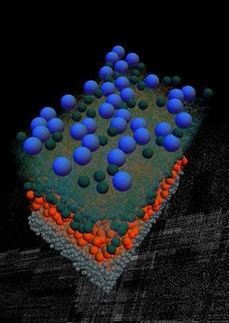One ion channel, many diseases
Dysfunction in cerebellar Calcium channel causes motor disorders and epilepsy
Advertisement
A dysfunction of a certain calcium channel, the so called P/Q-type channel, in neurons of the cerebellum is sufficient to cause different motor diseases as well as a special type of epilepsy. This is reported by the research team of Dr. Melanie Mark and Prof. Dr. Stefan Herlitze from the Ruhr-Universität Bochum. They investigated mice that lacked the ion channel of the P/Q-type in the modulatory input neurons of the cerebellum. “We expect that our results will contribute to the development of treatments for in particular children and young adults suffering from absence epilepsy”, Melanie Mark says.
P/Q-type channel defects cause a range of diseases
“One of the main challenging questions in neurobiology related to brain disease is in which neuronal circuit or cell-type the diseases originate,” Melanie Mark says. The Bochum researchers aimed at answering this question for certain motor disorders that are caused by cerebellar dysfunction. More specifically, they investigated potential causes of motor incoordination, also known as ataxia, and motor seizures, i.e., dyskinesia. In a previous study in 2011, the researchers showed that a certain Calcium channel type, called P/Q-type channel, in cerebellar neurons can be the origin of the diseases. The channel is expressed throughout the brain, and mutations in this channel cause migraines, different forms of epilepsy, dyskinesia, and ataxia in humans.
Disturbing cerebellar output is sufficient to cause different diseases
“Surprisingly, we found in 2011 that the loss of P/Q-type channels, specifically in the sole output pathway of the cerebellar cortex, the Purkinje cells, not only leads to ataxia and dyskinesia, but also to a disease often occurring in children and young adults, absence epilepsy,” Dr. Mark says. The research team thus hypothesized that disturbing the output signals of the cerebellum is sufficient to cause the major disease phenotypes associated with the P/Q-type channel. In other words, P/Q-type channel mutations in the cerebellum alone can elicit a range of diseases, even when the same channels in other brain regions are intact.
Disturbing the input to the cerebellum has similar effects as disturbing the output
Mark’s team has now found further evidence for this hypothesis. In the present study, the biologists did not disturb the output signals, i.e., the Purkinje cells, directly, but rather the input to these cells. The Purkinje cells are modulated by signals from other neurons, amongst others from the granule cells. “This modulatory input to the Purkinje cells is important for the proper communication between neurons in the cerebellum,” Melanie Mark explains. In mice, the researchers disturbed the input signals by genetically altering the granule cells so that they did not express the P/Q-type channel. Like disturbing the cerebellar output in the 2011 study, this manipulation resulted in ataxia, dyskinesia, and absence epilepsy. “The results provide additional evidence that the cerebellum is involved in initiating and/or propagating neurological deficits”, Mark sums up. “They also provide an animal model for identifying the specific pathways and molecules in the cerebellum responsible for causing these human diseases.”



























































